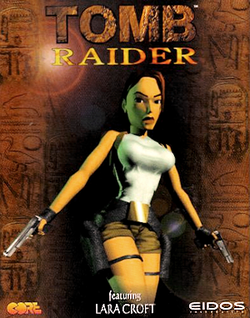Stand firmly, breathe deeply: The two secrets that make your game character looks alive
Game characters are like puppets on the stage. A poor puppeteer can only make them move, but a master can give them life. Here is a lesson learned from a great puppeteer and a reflection on how it will help us in creating characters in games.

There are many variants of the famous fairy tale — Pinocchio. In Disney’s version, Pinocchio was brought to life by a fairy as the reward of Geppetto’s good deeds. The fairy waved her wand at the puppet and in a brief moment of magic, the lifeless puppet slowly woke up and started to move. It was given the Gift of Life.

Walt Disney’s Pinocchio turning alive by a fairy
It has been more than 20 years since the first Tomb Raider released on PS1. If you still own a PS1 or are willing to take some time to watch the gameplay video on YouTube, you will find that the game characters in Tomb Raider 1 look so dead and lifeless.

Lara in Tomb Raider (1996)
However, when you compare it to Tomb Raider that was released in 2013, you will find that the character in the 2013 game looks much more lively. It seems that a fairy visited sometime in between 1996 and 2013, and gave our puppet characters a Gift of Life.

Lara in Tomb Raider (2013)
What’s the gift of life then? A more realistic rendering? I don’t think so. Take a look at The Legend of Zelda: Ocarina of Time. Link’s model is far from being realistic. However, we still can find something human within him.

Link in The Legend of Zelda: Ocarina of Time (1998)
There ought to be a secret Gift of Life that brings our game characters alive. Perhaps we should look into puppetry for more clues.
In 2015, I attended a puppetry workshop. The instructor, Beng Tian, was the Artist Director of Singapore’s local puppetry group — The Finger Players. She holds the magic of turning everything into a puppet and making it look alive. She was kind enough to share us two secrets of making the puppet looks alive.
1. Make your puppet walks/stands firmly
2. Make sure your puppet is breathing
These are the Gifts of Life that Beng Tian brought to her characters, regardless if it was a puppet or a hat.
Let’s take a look at Tomb Raider and The Legend of Zelda again. You will realize what Beng Tian said does make sense. The key difference between Link and Lara (1996) is that Link is breathing, but Lara is not. It is surprising that the tiny up-and-down movement of the character’s chest made such a difference in the character’s final presentation.
Mark Down, a Puppeteer from Blind Summit, suggested that “breath is the engine of all emotion”. As all living things are breathing, every inhale and exhale express their mental and physical status. You quickly breathe when you are nervous or tired. You lightly breathe when you are in peace.

Lara (left) is not breathing in Tomb Raider (1996)

Link is breathing when he is idle in The Legend of Zelda: Ocarina of Time (1998)
Furthermore, when Link is walking, his feet steps solidly on the ground without sliding. However in Tomb Raider, one of the characters actually slides when walking. Once the physical connection between the character and the ground breaks, the character is no longer walking but translating like a game object.

A character in Tomb Raider (1998) is walking while sliding on the floor

Link runs firmly in The Legend of Zelda: Ocarina of Time (1998)
Game characters are like puppets on the stage. A poor puppeteer can only make them move, but a master can give them life. While making games, there are occasions that we find it is difficult to establish emotional attachment between the player and the character, or the character simply looks dead. Remember the Gift of Life. It is subtle, yet magical.
Read more about:
BlogsAbout the Author(s)
You May Also Like







.jpeg?width=700&auto=webp&quality=80&disable=upscale)








